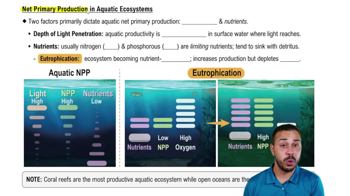Multiple Choice
Bacteria are especially important in making __________ available to plants.
1149
views
 Verified step by step guidance
Verified step by step guidance Verified video answer for a similar problem:
Verified video answer for a similar problem:



 4:07m
4:07mMaster Introduction to Ecosystems with a bite sized video explanation from Jason
Start learning